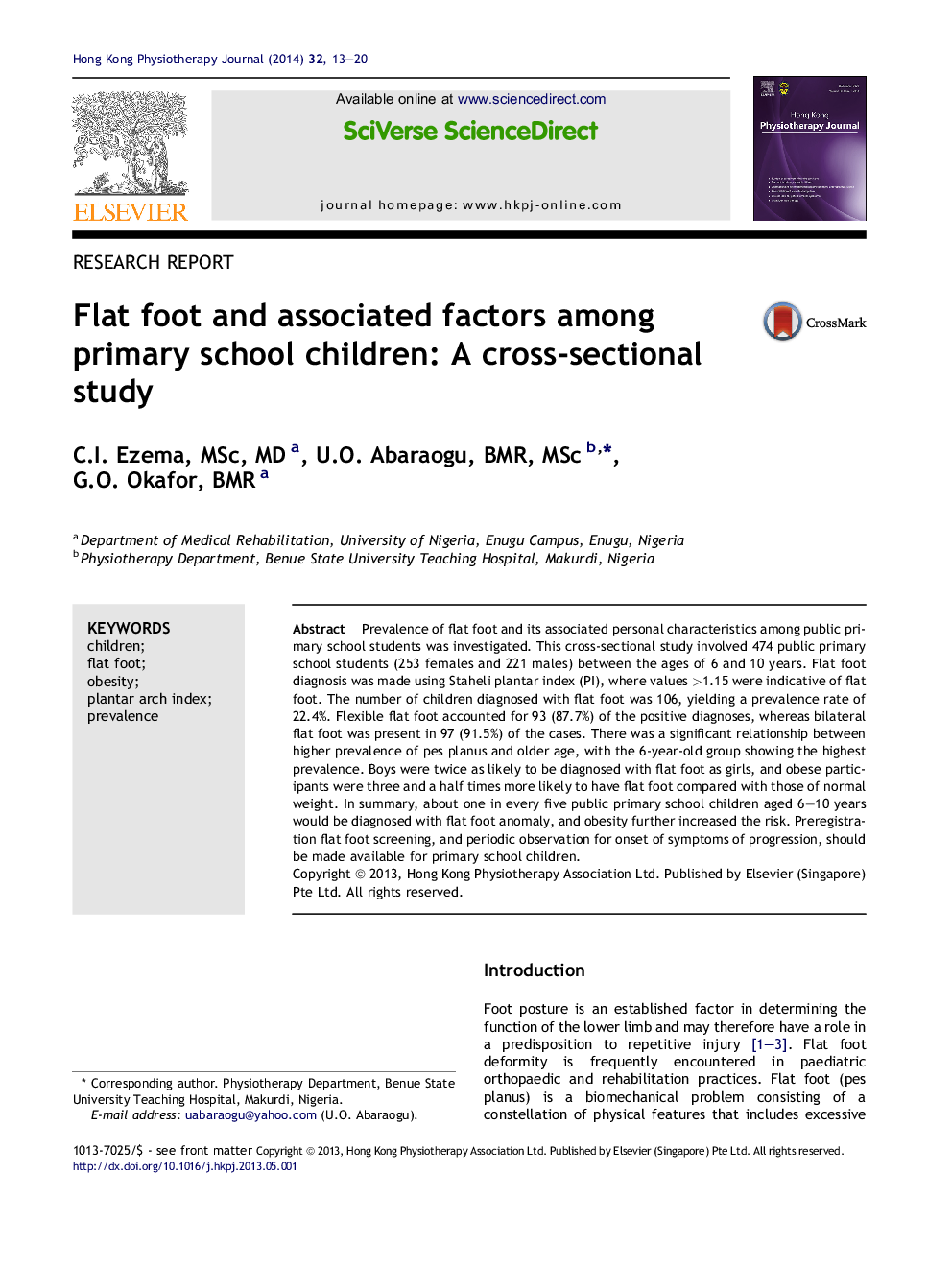| Article ID | Journal | Published Year | Pages | File Type |
|---|---|---|---|---|
| 2618292 | Hong Kong Physiotherapy Journal | 2014 | 8 Pages |
Prevalence of flat foot and its associated personal characteristics among public primary school students was investigated. This cross-sectional study involved 474 public primary school students (253 females and 221 males) between the ages of 6 and 10 years. Flat foot diagnosis was made using Staheli plantar index (PI), where values >1.15 were indicative of flat foot. The number of children diagnosed with flat foot was 106, yielding a prevalence rate of 22.4%. Flexible flat foot accounted for 93 (87.7%) of the positive diagnoses, whereas bilateral flat foot was present in 97 (91.5%) of the cases. There was a significant relationship between higher prevalence of pes planus and older age, with the 6-year-old group showing the highest prevalence. Boys were twice as likely to be diagnosed with flat foot as girls, and obese participants were three and a half times more likely to have flat foot compared with those of normal weight. In summary, about one in every five public primary school children aged 6–10 years would be diagnosed with flat foot anomaly, and obesity further increased the risk. Preregistration flat foot screening, and periodic observation for onset of symptoms of progression, should be made available for primary school children.
